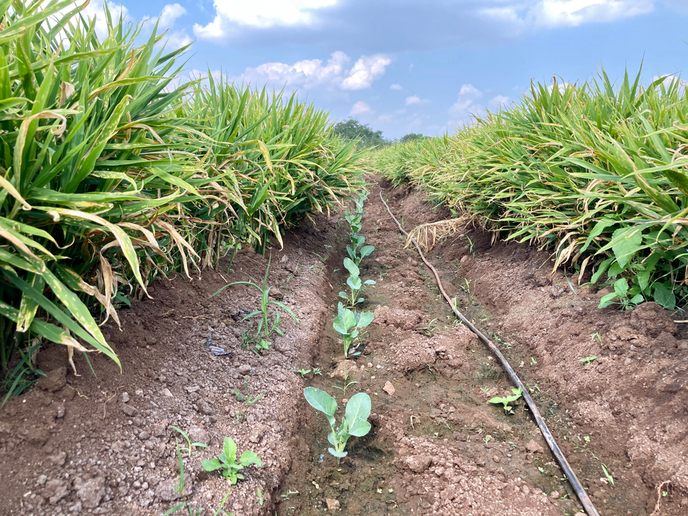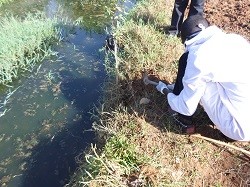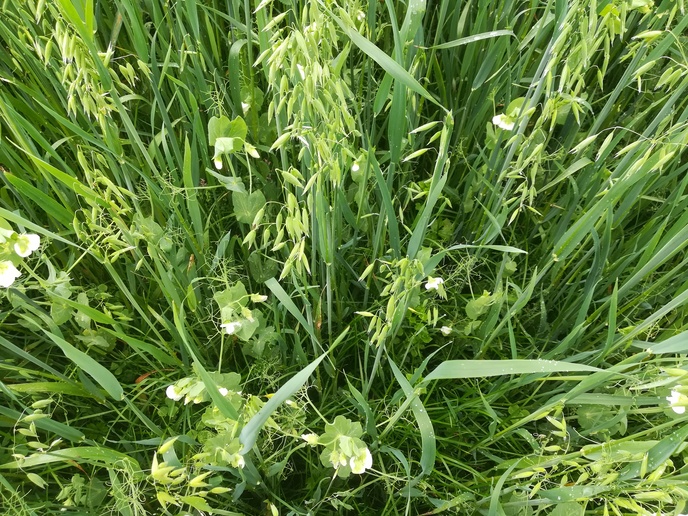Achieving best practices in intercropping
Consumers are becoming increasingly conscious about how their purchasing actions impact the environment and their health. As such, they are demanding more sustainable, responsibly sourced solutions – and the food industry is no exception. Help meeting this demand is species mixtures. “Species mixtures ensure that future farming systems can meet both policy requirements and consumer concerns about the food they eat, their health, and the environment,” explains Jean-Noël Aubertot, a researcher with the National Research Institute for Agriculture, Food and Environment(opens in new window) (INRAE) in France. According to Eric Justes, a researcher at CIRAD(opens in new window), species mixtures, also known as intercrops, crop associations, or plant teams, is an agricultural practice that increases crop productivity while reducing its environmental impact. The practice can help limit the impact of pests, diseases and weeds – all without the need for environmentally harmful pesticides. With the support of the EU-funded ReMIX project(opens in new window), both Aubertot and Justes, along with their colleagues, are working to analyse and optimise species mixtures. “With the goal of boosting intercropping in Europe, ReMIX converted scientific results into practical tools and information for farmers, advisors, agricultural stakeholders and policymakers,” adds Aubertot.
Modelling and simulations
The ReMIX project conducted much of its research using modelling and simulations. “Simulations illustrated the potential of species mixtures to be better adapted to variable water availability than single crops,” remarks Aubertot. “It also highlighted the role that plant trait combinations play in conferring high yields, increased resource efficiency, and enhanced resilience against pest and climate change.” Researchers also developed several new ideas for intercrop breeding. For example, they developed a novel theory using general mixing ability and evolutionary plant breeding methods for adapting breeding schemes to intercropping. Furthermore, the project identified several key traits of good performance in species mixtures and developed ways to assess the performance of these mixtures.
No one-size-fits-all solution
But perhaps the project’s most important outcome is its understanding of how the type of crop mixtures used is heavily dependent on the socio-economic context of the farm. In other words, there is no one-size-fits-all intercropping solutions, local adaptations are needed. “We demonstrated that the design of intercrops in terms of component species, management and configuration needs to be adapted to local demands, aspirations and possibilities,” explains Justes. “This requires taking into account the diversity of European production situations, not only in terms of pedo-climates and landscapes, but also in terms of the area’s social-economic context and the realities of local markets.”
A practical toolbox
Based on this finding, along with other results – including those coming from other EU and national research efforts – the project assembled a practical toolbox for achieving best practices in intercropping. “To ensure our solutions are useful and that they meet real-world needs, they were all designed and tested with the support of farmers and other stakeholders,” remarks Aubertot. The www.agrodiversity.eu (toolbox available online) includes, for example, specific guidance on the proper settings for using combined harvesters during intercropping. Users can also find an array of decision support tools, educational materials, an ecosystem services assessment tool, and even an interactive intercropping game(opens in new window). ReMIX is also a founding partner of the European Crop Diversification Cluster(opens in new window), which will further advance not only the project’s work, but also the use of intercropping across Europe.







